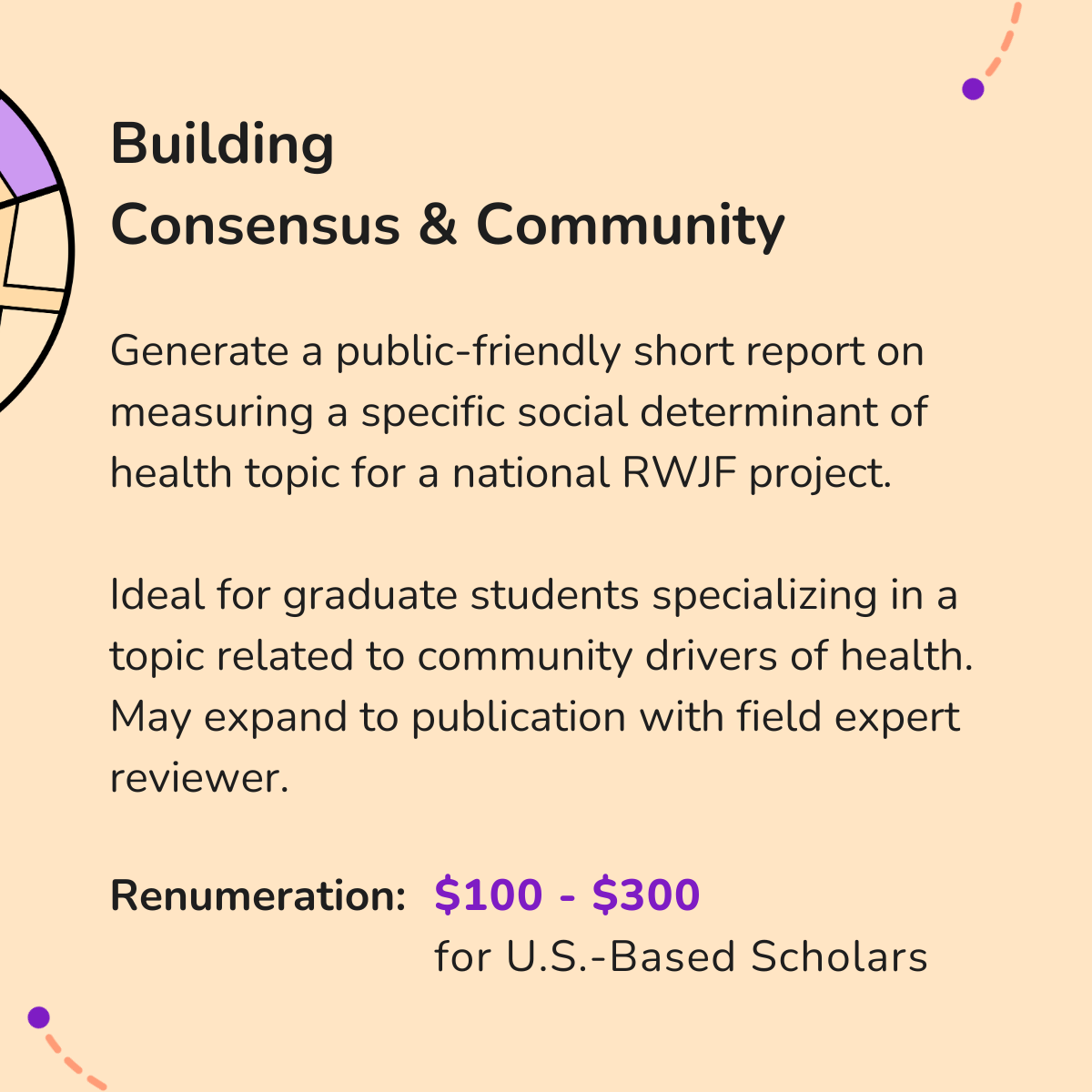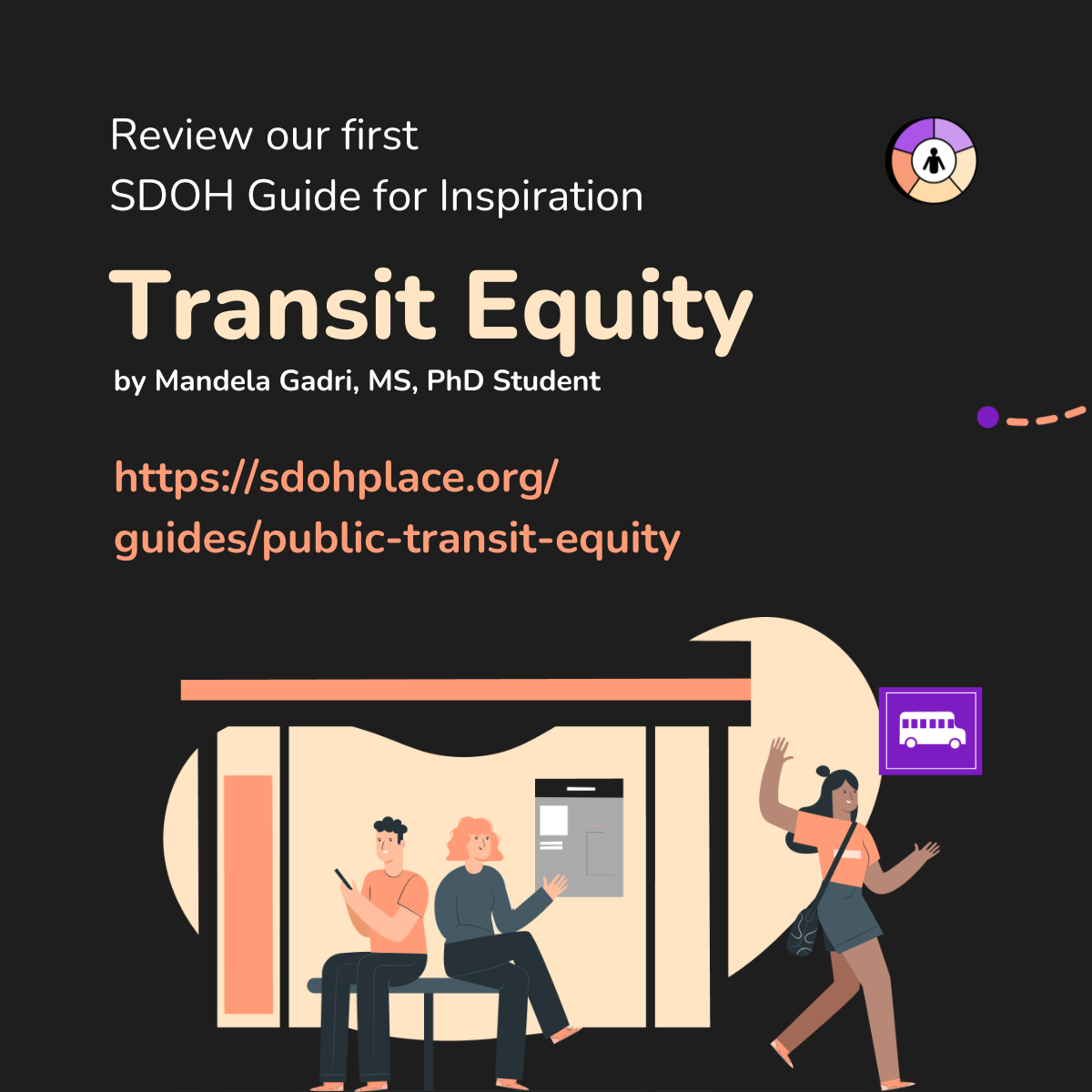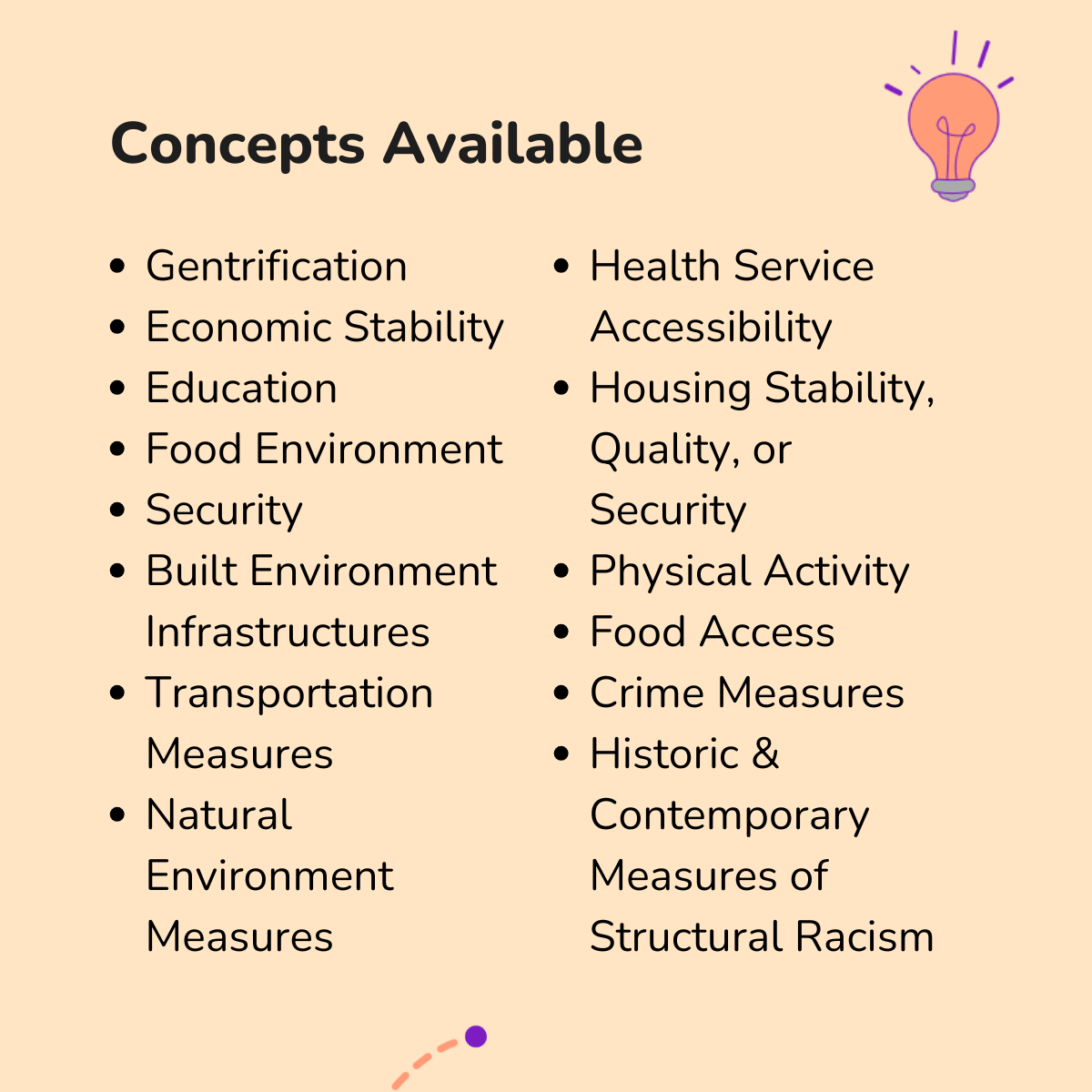Call for SDoH Measurement "Research Guide" Reports
- Generate a public-friendly short report on the measurement of a specific social determinant of health topic for a national RWJF project: SDOH & Place.
- Potential to expand your report with an expert in your field to a manuscript, leveraging access to a network of scholars studying Community-Level SDOH
- U.S.-based scholars & residents participating in writing and/or reviewing Research Guides are eligible for compensation for their time ($100-$300).
Overview
While there exists a long and complex history studying the role of place, social context, and the built environment within health, current and common frameworks of the “social determinants of health” (SDoH) tend to be simplistic in application. Specifics on how SDoH mechanisms work is not often seen in broad, SDoH domain-focused frameworks to inform practice.(1) There is also a lack of standardization in how SDoH factors are modeled, making scientific innovation in this study more difficult. A recent survey explored the lack of consensus across factors of the social determinants of health, grouping similar indicators across twelve sub-categories: demographics, economic stability, employment, education, food environment, health and healthcare, housing, neighborhood and built environment, physical activity and lifestyle, safety, social and community context, and transportation and infrastructure.(2)They found an overall lack of consensus across tools seeking to measure SDoH categories, recommending more collaboration across and within disciplines.(2) While innovative new methods can be used to expand our understanding of SDoH measures.(3-5)robust frameworks are still needed to frame learning gained in the human-environment mechanisms influencing health.
The SDOH & Place Project works to build a community of practice around defining & using community-level social determinants of health. To support these efforts, SDOH & Place Project team is curating a series of SDOH Research Guides to focus on best practices and approaches in measuring distinct SDOH indicators or structural drivers of health at community or regional scales. Effectively delineating SDoH’s spatial dimensions holds the potential to refine current research in public health, enrich the awareness of the role of places within health policies, and advance health equity in urban and rural environments.

Research Guide Specifications
Research guides focus on a distinct measure of a social determinant of health / structural driver of health. For example, transit equity, greenspace, or gentrification may be topics of interest that are associated with health outcomes in complex ways. Before researchers can analyze and interrogate those pathways, the constructs themselves must be identified as distinct measures. Research guides provide an overview of goals, motivations, and best practices of measurement for the indicator of interest.
We are seeking SDOH & Place Research Guide topic proposals and paid final contributions for guide composition. The guides for a specific measure of interest should include a:
- Distinct indicator viewed as a SDoH and/or structural driver of health, that has a known association, impact, and/or relationship with health outcomes.
- The indicator measurement should focus on community-level approximations, rather than individual, to address the contextual aspects of SDoH. How might the measure be estimated at tract, zip code, or county levels?
- Proposed topic should ideally be grouped within one primary sub-category: demographics, economic stability, employment, education, food environment, health and healthcare, housing, neighborhood and built environment, physical activity and lifestyle, safety, social and community context, and transportation and infrastructure
- Literature review-driven summary of best practices for measurement of indicator
- Table of commonly used measures to represent indicator with varying levels of complexity (i.e. census proxy versus geocomputationally derived estimate or survey-driven response)
- Writing style appropriate for a multi- or trans-disciplinary audience, explaining jargon thoughtfully and in plain language
- Carefully cultivated list of resources and evidence-based literature related to topic
Illustrations, (e.g. of models), tables, or occasionally bullet points are welcome to make the guide less one very long text. To view a Research Guide example, please see our first article on transit equity by Mandela Gadri at sdohplace.org/guides/public-transit-equity.

Application
Composing a research guide may be an excellent opportunity for geography, social sciences, urban planning, and/or public health graduate students mastering a specific topic of interest, as well as researchers or advocates specializing in a topic crucial to SDoH research. We are also seeking reviewersof research guides to enhance and validate content as masters in their field; reviewers may be proposed by research guide authors, and/or may submit interest for a topic separately. Authors and reviewer teams will be encouraged to collaborate on updates together, and expand as a full manuscript for submission to a peer-reviewed journal.
Authors of accepted SDoH Research Guides will receive a $300 flat-rate fee for their guide; Reviewers will receive a $100 remuneration.
**Remuneration & Fee Eligibility:**At this time, we are only able to provide remuneration & fees for U.S. based scholars. See a complete list of eligibility details here. If you are an international scholar that is interested in participating and donating your time, please indicate in the application.
Application Procedure: To apply, please review the following:
- Identify your topic of interest in accordance with guidelines above, and ensure it is available. You can also propose or refine specific calls for indicators like food access or gentrification.
- For Authors: Prepare a ~250 word abstract of your indicator of interest.
- For Reviewers: Prepare a ~250 word summary of your expertise for a specific SDoH topic.
- Submit your application (including topic, abstract, curriculum vitae, and related details) using this form (or click the button below) by November 30th, 2024.
- If invited to submit a full SDoH Research Guide, your deadline for completion will be January 15, 2025. The flat-rate fees and remunerations will be disbursed upon completion of work.
Submit your application here: forms.illinois.edu/sec/1493227735
Application decisions will be communicated no later than December 7th, 2024. Applications received may be reviewed on a rolling basis. Authors may be accepted and can start before the deadline above. Be sure to check the list of accepted topics before submitting.

Please reach out to the team with any questions you may have via the SDOH & Place Contact Form, and/or directly messaging Research Coordinator Marc Astacio-Palmer (mastacio@illinois.edu).
References
- Thimm-Kaiser M, Benzekri A, Guilamo-Ramos V. Conceptualizing the Mechanisms of Social Determinants of Health: A Heuristic Framework to Inform Future Directions for Mitigation. Milbank Q. 2023;101(2):486-526. doi:10.1111/1468-0009.12642
- Elias RR, Jutte DP, Moore A. Exploring consensus across sectors for measuring the social determinants of health. SSM - Popul Health. 2019;7:100395. doi:10.1016/j.ssmph.2019.100395
- Kolak M, Bhatt J, Park YH, Padrón NA, Molefe A. Quantification of Neighborhood-Level Social Determinants of Health in the Continental United States. JAMA Netw Open. 2020;3(1):e1919928. doi:10.1001/jamanetworkopen.2019.19928
- Moise IK. Variation in Risk of COVID-19 Infection and Predictors of Social Determinants of Health in Miami–Dade County, Florida. Prev Chronic Dis. 2020;17:200358. doi:10.5888/pcd17.200358
- Moise IK, Ortiz-Whittingham LR, Owolabi K, Halwindi H, Miti BA. Examining the Role of Social Determinants of Health and COVID-19 Risk in 28 African Countries. COVID. 2024;4(1):87-101. doi:10.3390/covid4010009












